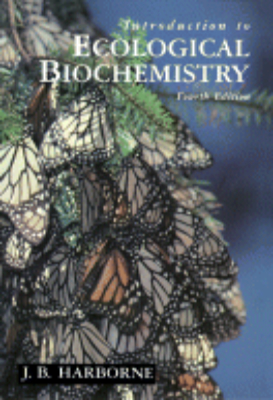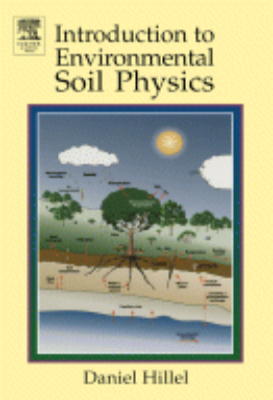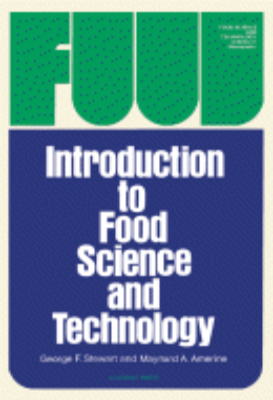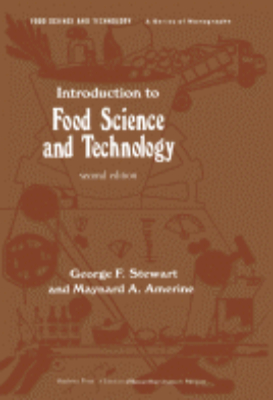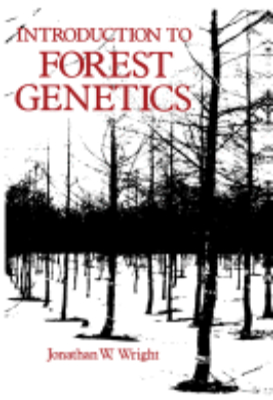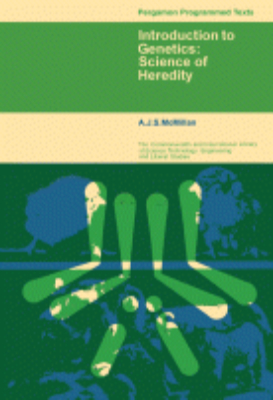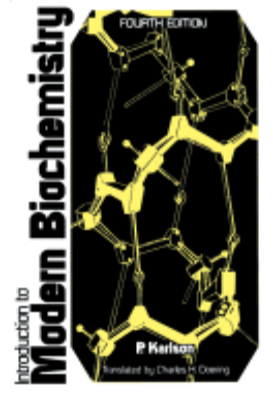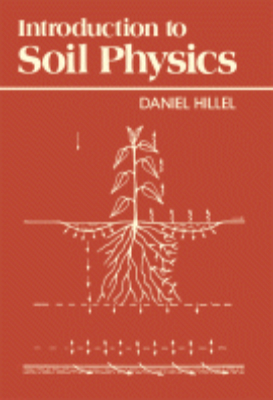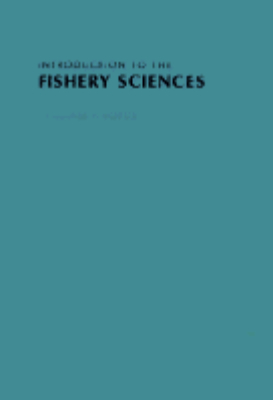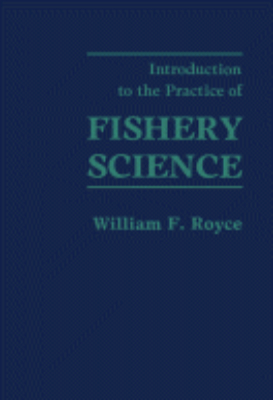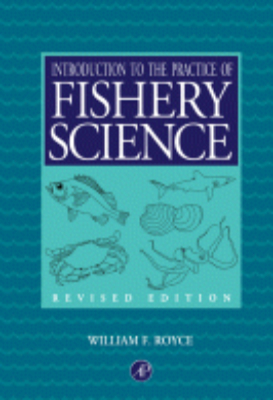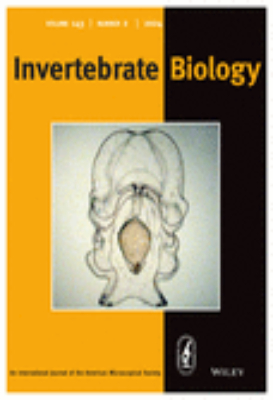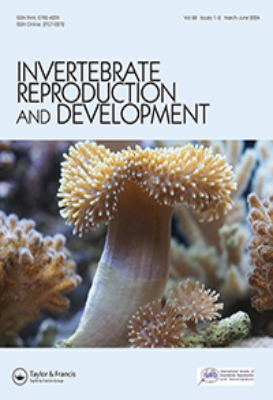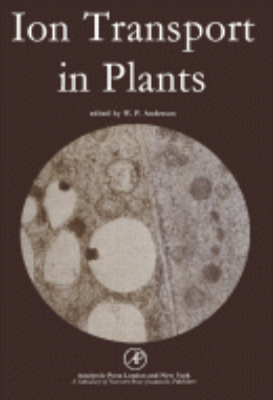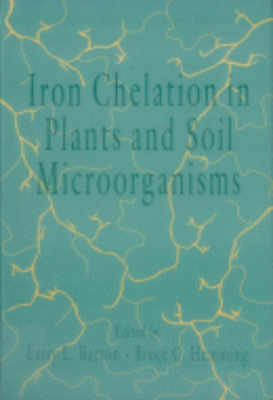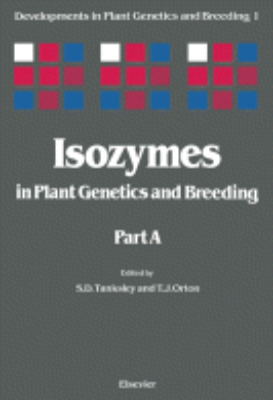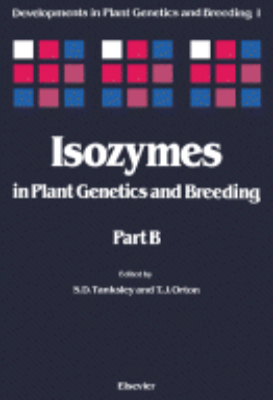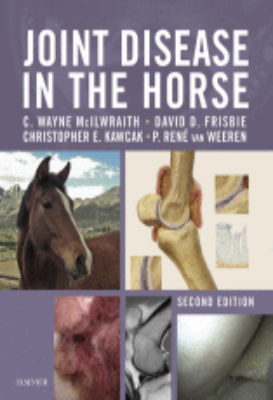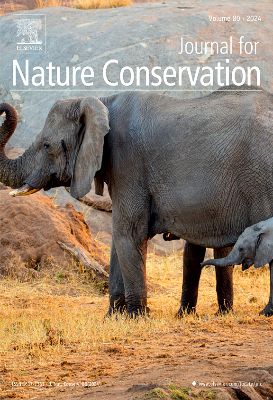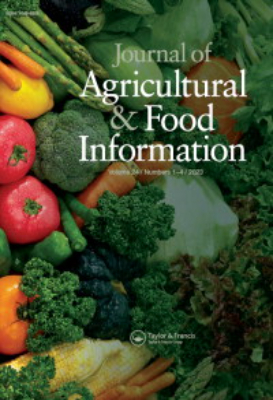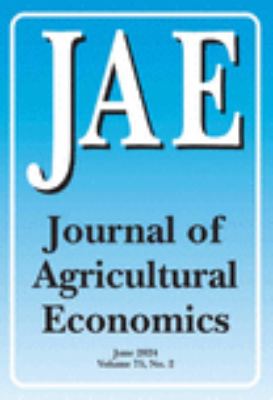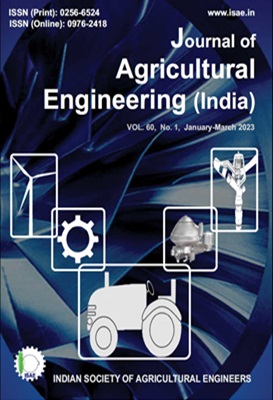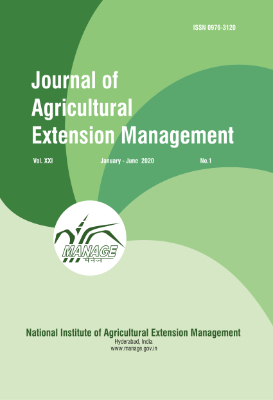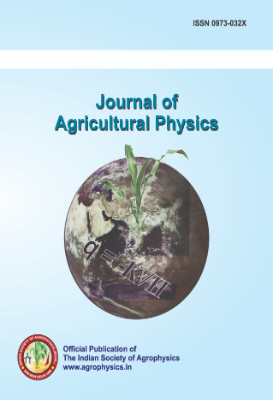E-Resources
Introduction to Ecological Biochemistry
"Ecological biochemistry concerns the biochemistry of interactions between animals, plants and the environment, and includes such diverse subjects as plant adaptations to soil pollutants and the effects of plant toxins on herbivores. The intriguing dependence of the Monarch butterfly on its host plants is chosen as an example of plant-animal coevolution in action. The ability to isolate trace amounts of a substance from plant tissues has led to a wealth of new research, and the fourth edition of this well-known text has consequently been extensively revised. New sections have been provided on the cost of chemical defence and on the release of predator-attracting volatiles from plants. New information has been included on cyanogenesis, the protective role of tannins in plants and the phenomenon of induced defence in plant leaves following herbivory. Advanced level students and research workers aloke will find much of value in this comprehensive text, written by an acknowledged expert on this fascinating subject. Key Features. The book covers the biochemistry of interactions between animals, plants and the environment, and includes such diverse subjects as plant adaptations to soil pollutants and the effects of plant toxins on herbivores. The intriguing dependence of the Monarch butterfly on its host plants is chosen as an example of plant-animal coevolution in action. New sections have been added on the cost of chemical defence and on the release of predators attracting volatiles from plants. New information has been included on cyanogenesis, the protective role of tannins in plants and the phenomenon of induced defence in plant leaves following herbivory"
Introduction to Environmental Soil Physics
An abridged, student-oriented edition of Hillel's earlier published Environmental Soil Physics, Introduction to Environmental Soil Physics is a more succinct elucidation of the physical principles and processes governing the behavior of soil and the vital role it plays in both natural and managed ecosystems. The textbook is self-contained and self-explanatory, with numerous illustrations and sample problems. Based on sound fundamental theory, the textbook leads to a practical consideration of soil as a living system in nature and illustrates the influences of human activity upon soil structure and function. Students, as well as other readers, will better understand the importance of soils and the pivotal possition they occupy with respect to careful and knowledgeable conservation.
Introduction to Food Science and Technology: 1973
Introduction to Food Science and Technology focuses on the importance of food science and food technology to humans. This book discusses the total sequence of operations in food technology, which includes the selection of raw materials, processing, preservation, and distribution. Comprised of nine chapters, this monograph starts with an overview of the processing and storage of food. This book examines how the food processor often controls the producers operations by demanding a raw product of a certain type in order to satisfy a particular processing and consumer demand. Other chapters consider the primary concern of food scientists and technologists in the processing and preservation of raw agricultural products as nutritious and stable foods of acceptable quality. The final chapter deals with the variety of jobs available for those trained in the biological, physical, and behavioral sciences and their applications to food processing and food preservation. Food technologists, chemists, and scientists will find this book extremely useful.
Introduction to Food Science and Technology: 1982 Second Edition
The Second Edition of this popular textbook has benefited from several years of exposure to both teachers and students. Based on their own experiences as well as those of others, the authors have reorganized, added, and updated this work to meet the needs of the current curriculum. As with the first edition the goal is to introduce the beginning student to the field of food science and technology. Thus, the book discusses briefly the complex of basic sciences fundamental to food processing and preservation as well as the application of these sciences to the technology of providing the consumer with food products that are at once appealing to the eye, pleasing to the palate, and nutritious to the human organism. Introduction to Food Science and Technology is set in the world in which it operates; it contains discussions of historical development, the current world food situation, the safety regulations and laws that circumscribe the field, and the careers that it offers.
Introduction to Forest and Shade Tree Insects
This comprehenisive text approaches the subject from an ecological/evolutionary biological perspective. The assumption is that one cannot study forest insects without understanding the dynamics of the relationship between an insect and its host plant. This relationship includes knowing what factors control forest insect populations such as food, food quality, tree vigor, host selection, and symbiotic relationships. The authors also discuss tree-injuring insects from the perspective of their influence on tree physiology and growth as well as economic and commercial effects. The book represents a "modern" approach to the topic of forest and shade tree insects; is well-illustrated; and includes a comprehensive primary reference list.
Introduction to Forest Genetics
Introduction to Forest Genetics examines some of the basic genetic concepts typically used in forestry and tree improvement studies, including Mendelian and population genetics. It also describes techniques that are generally useful in tree improvement work, including individual tree selection and breeding, provenance testing, species and racial hybridization, and introduction of exotics. Organized into 19 chapters, this volume begins with an overview of forest genetics and problems associated with forest genetics. It then discusses concepts from basic genetics, including chromosome structure and function; DNA and RNA; nongenetic inheritance; and genotype versus phenotype. Other chapters focus on inbreeding: complete elimination of homozygous recessive trees; mutation and migration; and controlled pollination and vegetative propagation. The book also covers the establishment and measurement of test plantations; general principles and methods of selective breeding; choice of breeding method and type of seed orchard; heritability and genetic gain; geographic variation in Scotch pine and American trees; species and racial hybridization; chromosome studies; and polyploidy and haploidy breeding. This book is a valuable resource for foresters, professional tree breeders, and those with or without previous training in genetics or forestry.
Introduction to Genetics
Introduction to Genetics: Science of Heredity presents a linear programmed text about hereditary and genetics. This book discusses a variety of topics related to heredity and genetics, including chromosomes, genes, Mendelism, mitosis, and meiosis. Organized into six chapters, this book begins with an overview of some of the experiments that first provide an understanding of heredity and laid the foundation of the science of genetics. This text then provides detailed information about the cell and explains how the essential parts of it reproduce and divide. Other chapters consider how the chromosome theory can explain not only the facts of Mendelism, but also the many complications that arise in genetics. This book discusses as well the problems that can happen during the process of mitosis and meiosis. The final chapter deals with the practical problems that confront the plant breeder. This book is a valuable resource for teachers and students of biology.
Introduction to Laboratory Animal Science and Technology
Introduction to Laboratory Animal Science and Technology discusses the principles involved in the healthy maintenance of animals in the laboratory or animal house. This book is divided into eight six units of study of the physical requirements of animals, physiological data, and techniques of husbandry, followed by summary data capsules and recommended further reading. After an overview of the laboratory animals, this book goes on dealing with various aspects of animal care, including their accommodation, health care routine, and animal health and hygiene. The next chapters examine the components of animal diet, the biological aspects of animal reproduction, breeding and heredity. The final chapter emphasizes the legal requirements concerning anesthesia, laboratory procedures, and the issue of euthanasia. This book will prove useful to laboratory technicians, students, students, researchers, and the general public who are concerned for animals and their use in laboratory work.
Introduction to Modern Biochemistry: Fourth Edition 1975
Introduction to Modern Biochemistry, Fourth Edition provides an understanding of the chemical background of biological phenomena. This book discusses the concepts of generation and utilization of free energy. Organized into 23 chapters, this edition starts with an overview of the important role of amides in biochemistry. This text then explores the chemical structure of proteins and describes the methods of determining the amino acids sequence of proteins. Other chapters consider the role of genes in protein and enzyme synthesis. This book discusses as well the significance of the submicroscopic structure of the cell in biochemical reactions. The reader is also introduced to the chemistry of the carbohydrates. The final chapter deals with biochemical functions of various organs, including the digestive tract, liver, kidney, nervous system, muscles, and connective tissues. This book is a valuable resource for biologists, biochemists, scientists, researchers, and readers who are interested in the field of biochemistry.
Introduction to Modern Biochemistry: Second Edition 1965
Introduction to Modern Biochemistry, Second Edition focuses on the methodologies, processes, reactions, and technologies involved in biochemistry. The publication first takes a look at organic chemistry and biochemistry, amino acids, and peptides. Discussions focus on the determination of amino acid sequence in peptides, naturally occurring peptides, chemical properties, separation of amino acids, hydrocarbons as parent substances, functional groups, polymeric compounds, and reactions with biochemical significance. The text then ponders on proteins, enzymes and biocatalysis, and coenzymes. The manuscript examines nucleic acids and protein biosynthesis, metabolism of proteins, and porphyrins and hemins. Topics include chemical constitution of heme, significance and reactions of blood pigment, metabolism of aromatic amino acids, degradation to activated fatty acids, decarboxylation of amino acids, and biosynthesis and degradation of nucleotides. The text also ponders on carbon dioxide formation in the citrate cycle, fats and fat metabolism, and phosphatides, cerebrosides, and gangliosides. The book is a valuable reference for biochemists and researchers interested in the processes, approaches, and technologies involved in biochemistry.
Introduction to Soil Physics
This book is a unified, condensed, and simplified version of the recently issued twin volumes, Fundamentals of Soil Physics and Applications of Soil Physics. Nonessential topics and complexities have been deleted, and little prior knowledge of the subject is assumed. An effort has been made to provide an elementary, readable, and self-sustaining description of the soil's physical properties and of the manner in which these properties govern the processes taking place in the field. Consideration is given to the ways in which the soil's processes can be influenced, for better or for worse, by man. Sample problems are provided in an attempt to illustrate how the abstract principles embodied in mathematical equations can be applied in practice. The author hope that the present version will be more accessible to students than its precursors and that it might serve to arouse their interest in the vital science of soil physics.
Introduction to the Fishery Sciences
Introduction to the Fishery Sciences provides a broad introduction into the study of aquatic organisms and ecology of fisheries and some of the legal, social, and political aspects of their use. The book is intended to be used by students and those who want to broaden their knowledge on the science of fishery. The text provides discussions on a wide range of topics such as trends in foodfish production; managing of fishery aquatic environment; identification and classification of fishery resources; and fishery resource management. Limnologists, freshwater biologists, ecologists, fisheries managers, and students in fisheries science will find the book a good reference material.
Introduction to the Practice of Fishery Science: 1984
Introduction to the Practice of Fishery Science covers the role of fishery science in various social affairs. This book is divided into three parts encompassing 15 chapters. Part I is about the profession, what is embodied in a professional career and the expanding challenges to the profession, with a summary of the work of organizations that employ fishery scientists. Part II deals with the traditional sciences that apply to the aquatic environment and its organisms. This part also tackles their biology, ecology, populations, and culture. Part III presents an overall qualitative concept of the activity of fishery scientists. This part also provides a perspective on fishery problems in several major areas and the ways in which the many kinds of scientists are attacking them. This book will prove useful to fishery scientists, researchers, and students.
Introduction to the Practice of Fishery Science: 1996
Revised and updated, Royce'sIntroduction to the Practice of Fishery Scienceis a classic text. With a new chapter onaquaculture, this book provides the background for a first course in fishery science. Intentionally focused on the practical and professional requirements of careers in the management and maintenance of fisheries, this text will be useful to students as well as to established professionals.
Ion Transport in Plants
Ion Transport in Plants covers knowledge about ion transport in plants. The book discusses ultrastructural localization; formalism and membrane models; and membrane resistance and H+ fluxes. The text also describes + fluxes in cells and organelles; Na+-+ transport and ionic relations of the halophytes; and Cl- transport in vesicles. The ion transport in roots and the symplasm is also considered. Botanists, biochemists and biologists will find the book invaluable.
Iron Chelation in Plants and Soil Microorganisms
Iron Chelation in Plants and Soil Microorganisms provides an introduction to the basic biological processes of plants that require iron and those affected by iron deficiency. The book aims to stimulate research in the area of iron metabolism in plants and plant-associated microorganisms. The book is organized into three parts. Part I provides an overview of research methods used in the study of iron chelation relevant to plant biology. Key topics covered include microbial siderophores, phytosiderophores, and plant and microbial ferritins. Part II discusses the molecular approach to iron chelation, which includes molecular biology, enzymology, and iron uptake activities. Part III addresses various physiological and chemical characteristics of the iron stress response. This book was written for scientists involved in plant physiology, agronomy, phytopathology, plant control, and soil microbiology. It may also be of interest to those studying soil chemistry, plant-mineral relationships, horticulture, in vivo and in vitro iron measurements, and microbial ecology. In addition, the book can serve as reference for specialty courses and laboratories conducting research on iron nutrition in plants as well as individuals engaged in iron-related research.
Joint Disease in the Horse
Dr. McIlwraiths Joint Disease in the Horse, 2nd Edition is the only book to give you a full account of equine joint disease, combining a thorough, up-to-date survey of scientific advances with a practical guide to both medical and surgical treatments. With contributions from nationally and internationally recognized pioneers in the field, this groundbreaking text offers an overview of joint structure and function and translates the latest information on basic joint pathobiology into practical application for the clinician. Step-by-step guidance on injection techniques and medications, along with a survey of practical arthroscopic surgery and developments, make it a truly indispensable reference for all equine veterinarians treating sports and racing horses.
Jones’s Animal Nursing
In the tradition of this well established text, the fifth edition is enlarged and updated to cover recent developments in the field of animal nursing. In the four years since the previous edition was published the position of the Veterinary Nurse has become professionally recognized and a new syllabus for the Royal College of Veterinary Surgeons nursing scheme has been established. This has helped define the depth of knowledge required of trainee nurses in their preparation for examinations. In the light of the new syllabus there is a new chapter on Radiography, the chapters on First Aid, Basic Nursing Care, The Practice of Nursing and Surgical Nursing have been extensively revised, and the chapter on Medical Nursing has been lengthened. The contributions, from 27 experts in the field, are highly illustrated and suggestions for further reading are provided at the end of each chapter.
Journal of Agricultural Engineering
The subject matter reflects the full range and interdisciplinary nature of research in engineering and physics for agriculture. Manuscripts describing engineering innovations for field crops, horticulture, livestock and fisheries and those reporting research seeking to understand and model the physical processes underlying agricultural systems are welcome.
Journal of Agricultural Extension Management
Focus and Scope The Journal of Agricultural Extension Management (JAEM) disseminates information on extension systems and practices, extension research, efficient organization of technology transfer and other socio-economic issues concerning agriculture and allied areas. Papers on original research in the field of agricultural extension and allied sectors, covering new developments, concepts and their application in effective extension work are accepted for publication. Peer Review Process All papers submitted to the Journal of Agricultural Extension Management (JAEM) are subject to a masked peer review. The article is sent to one reviewer who is selected based on his or her expertise on the subject, research in the area and experience. The criteria for evaluation of articles in the Journal of Agricultural Extension Management are topicality, clear and logical analysis, sound methodology, fairly good English and contribution to knowledge. The Editor reserves the privilege of editing the manuscript, returning it to the author for revision or rejecting any manuscript as unsuitable in topic, style or form with or without requesting external review. Publication Frequency The journal is published half-yearly in June and December. Publication Ethics and Malpractice Statement The Journal of Agricultural Extension Management (JAEM) is a peer-reviewed journal. The responsibilities of the authors, editors and reviewers involved in publishing this journal are indicated here. All papers submitted to the Journal of Agricultural Extension Management are subject to a masked peer review. JAEM does not levy any charges to authors for submission, processing, or publication of articles in the Journal. Authors submitting an article to the journal must declare that (1) they are authors of the article in the order in which listed; (2) the article is original and represents their contributions and has not been copied or plagiarized in whole or in part from other works; and (3) the article has not been published and has not been submitted for publication elsewhere. In cases of proven research misconduct or plagiarism, the publisher, in collaboration with the editors, will take measures to clarify the situation and amend the article. This includes the publication of a correction, clarification or retraction of the work. Responsibility of Authors Authors should ensure that their work is original. If the authors have used the work of others, this must be appropriately cited or quoted. The responsibility for the accuracy of the information, facts, and citations, lies with the authors of the publication. Each author who submits the manuscript should read the guidelines for submission in the Journal of Agricultural Extension Management. The manuscript must be plagiarism-free. The Corresponding Author should ensure that all co-authors have seen and approved the final version of the paper and have agreed to its submission for publication. Sources of funding for the research reported in the article should be acknowledged at the end of the article. Each article should be accompanied with a declaration by all the authors that (1) they are authors of the article in the order in which listed; (2) the article is original and represents their contributions and has not been copied or plagiarized in whole or in part from other works; and (3) the article has not been published and has not been submitted for publication elsewhere. Authors must also declare that the source of information from other published or unpublished works has been referenced and certify that they are solely responsible for the content of the article and the work included in the article. Authors may be asked to provide the raw data in connection with a paper for editorial review and should be prepared to provide access to such data. Authors should avoid duplication in their submissions i.e. attempting to publish similar manuscripts in more than one journal. Authorship should be limited to those who have made a significant contribution to the conception, design and execution of the study. Responsibility of Editors Manuscripts are evaluated on their topicality, originality of the idea, unique argument or insight; clarity of objectives, sound methodology, clear and logical analysis and depth of discussion, appropriate examples, consistent structure and presentation and contribution to knowledge. JAEM does not consider factors like gender, race, religious beliefs, ethnic origin, citizenship, or political philosophy of the authors. The papers submitted to the journal first will undergo screening for originality in content. If they satisfy this requirement the papers will be further sent to review. Otherwise, the papers will be rejected at the first level. The Editor is solely and independently responsible for deciding which articles should be accepted for publication. The Editor reserves the privilege of editing the manuscript, returning it to the author for revision or rejecting any manuscript as unsuitable in topic, style or form with or without requesting external review. Editors must not disclose any information about a submitted manuscript to anyone other than those involved in the publishing process. Reviewers JAEM maintains confidentiality of the submission. Reviewers remain anonymous to authors. The reviewers do not know the author's identity. The identities of the reviewers are known only to the Editorial Team. Reviewers' comments to the editors are confidential and before passing on to the author are made anonymous. Manuscripts received for review are treated as confidential documents. Reviewers follow a format provided by MANAGE for the review of the articles. A reviewer may inform the Editorial Team about any similarity or overlap between the manuscript under consideration and any other published paper which they know about. Sponsors National Institute of Agricultural Extension Management Journal History The Journal is being published since 2000. From 2000 to 2016 the title was MANAGE Extension Research Review. Subsequently, the title was modified to Journal of Agricultural Extension Management.
Journal of Agricultural Physics
The Journal of Animal Research, which is published half yearly in Print and Electronic form by New Delhi Publisher, accepts exceptionally exciting, novel and timely communications presenting new and original research work for publication keeping in mind the all round welfare of domestic animals including poultry, companion animals, wild animals and experimental models in lab animals. The task of the Journal is to attract the papers on original research articles, short communication and peer reviewed articles from an individuals and organizations of International repute dedicated to animal science, and veterinary science and education. Articles published in the Journal of Animal Research cover a broad range of explorative topics in all subjects of veterinary and animal sciences including animal production, reproduction, growth and Health aspects of domestic animals. This includes veterinary medicine, veterinary surgery, veterinary gynaecology and obstetrics, animal genetics and breeding, animal nutrition, veterinary physiology and biochemistry, veterinary parasitology, veterinary microbiology, veterinary pathology, veterinary pharmacology and toxicology, livestock product and technology, livestock production and management, veterinary public health and hygiene, veterinary anatomy, poultry science, laboratory animals and wild animals. The journal is also focused on research and management of laboratory animals (e.g. rat, mice, rabbit, guinea pig etc.) and wild animals. However, basic types of papers and notes which relate to investigations in a narrow specialized branch of a discipline may not form an appropriate material for this journal. The Journal of Animal Research will publish the reviews, short communication and proceedings of symposia of National and International relevance subject to the final decision of Editor in Chief. National Academy of Agricultural Science (NAAS) Rating 2024: 4.78

